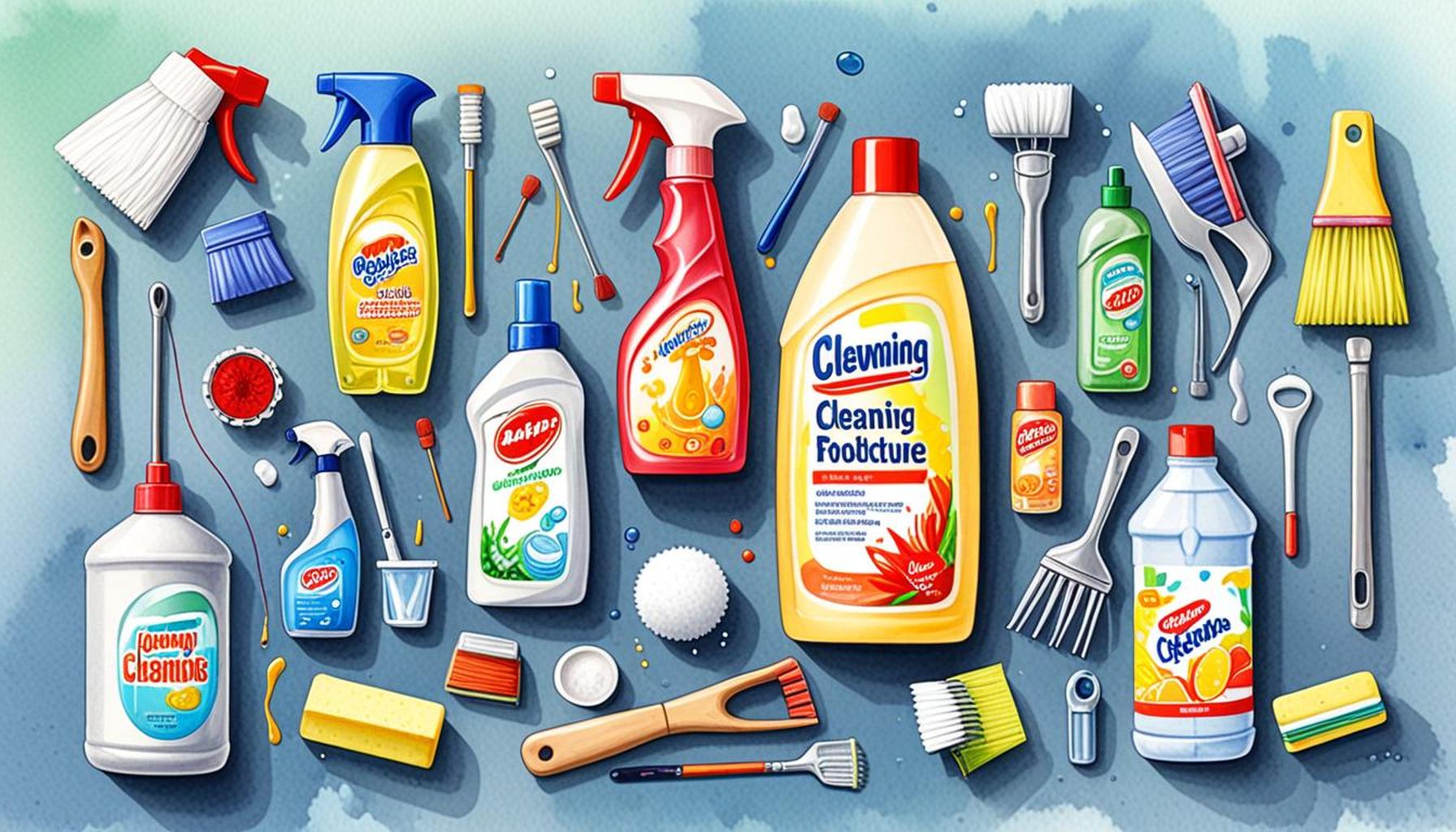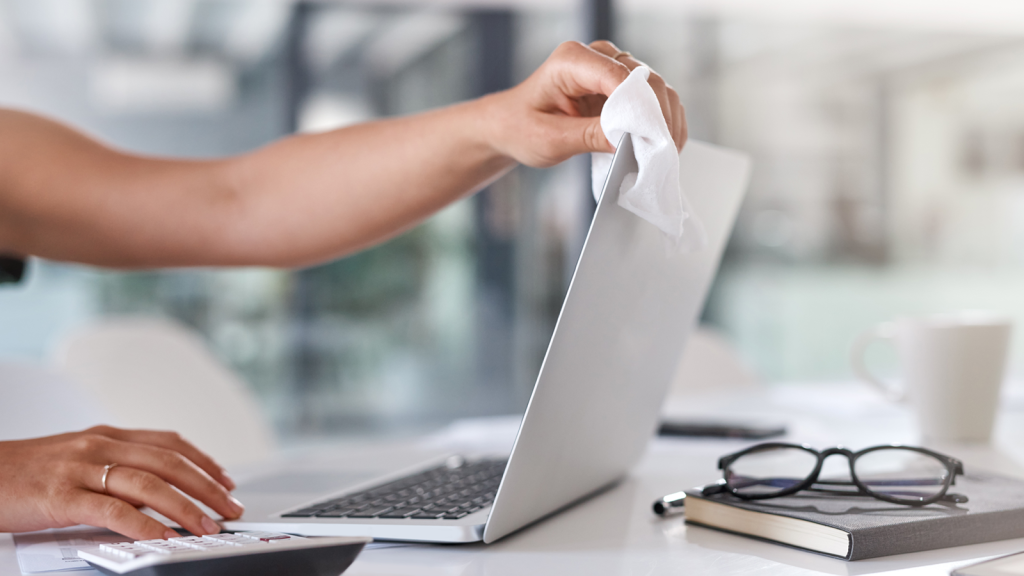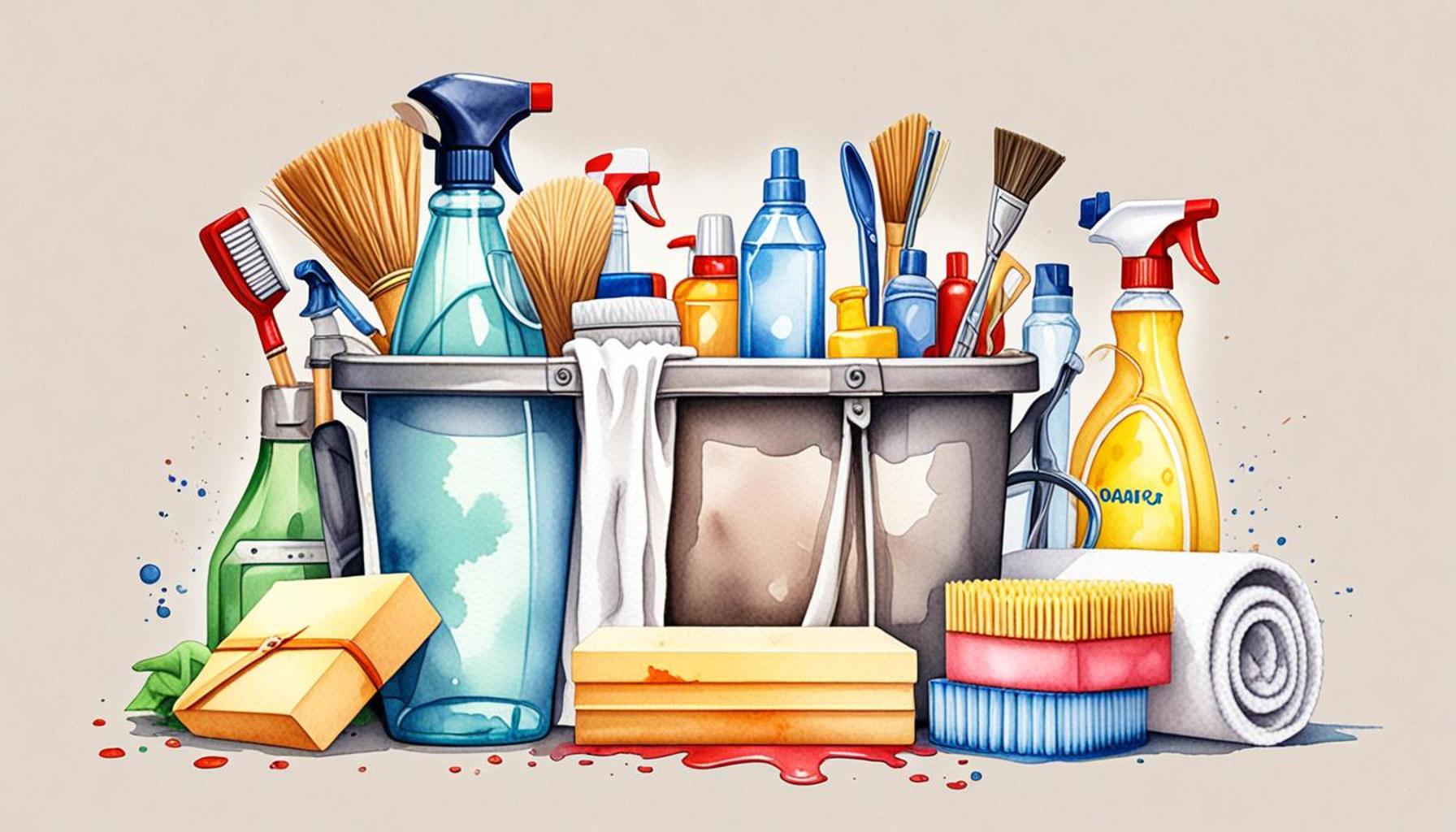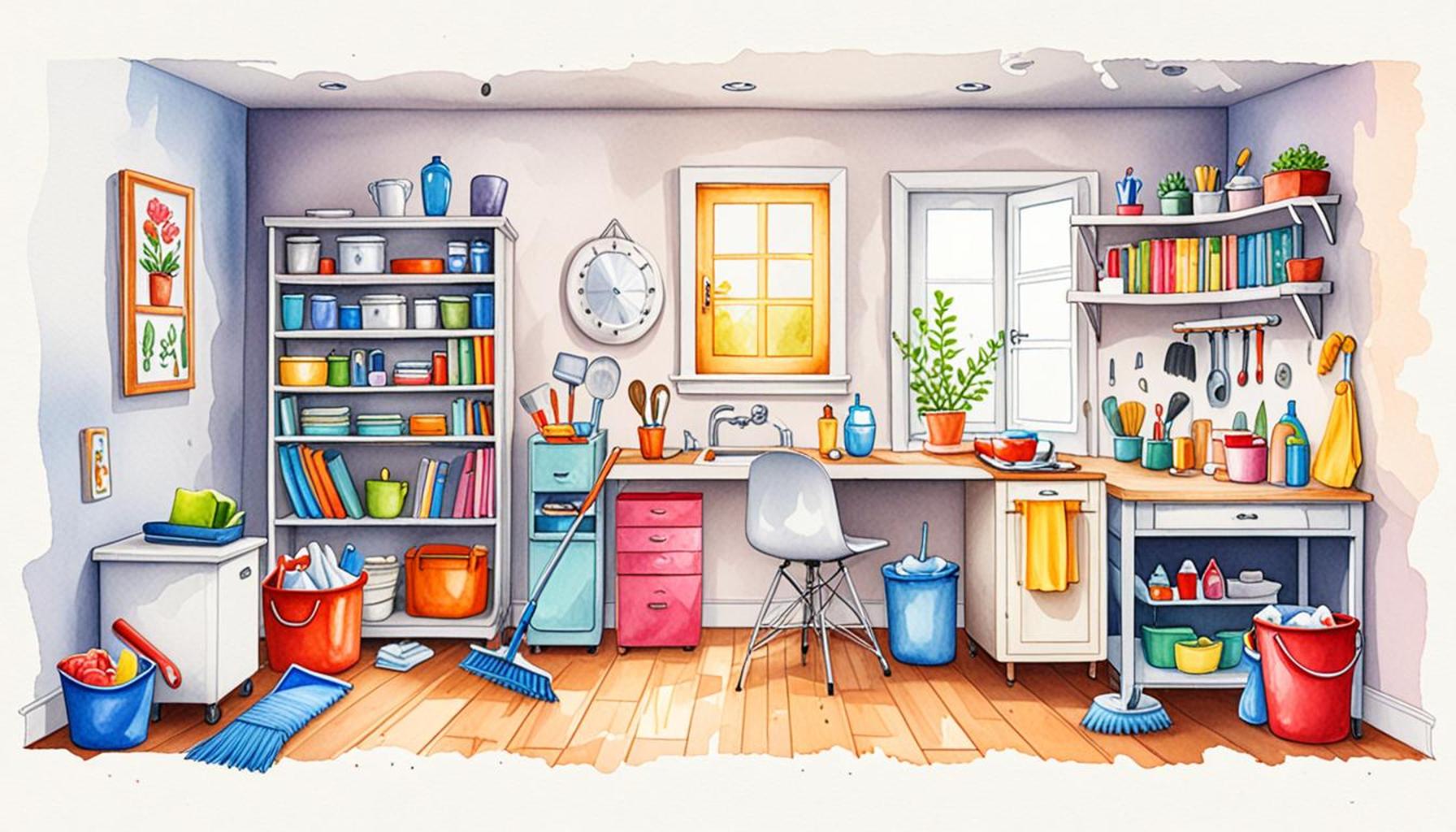Methods of Categorizing Cleaning Products for a More Efficient Maintenance Routine

In today’s fast-paced world, keeping our environments clean has become a pivotal aspect of maintaining both health and well-being. From households bustling with family activities to businesses striving for stellar customer experiences, the importance of an organized cleaning routine cannot be overstated. However, with an overwhelming array of cleaning products on the market, selecting and utilizing the right items can prove to be a daunting task. This is where effective categorization comes into play, enabling users to streamline their cleaning efforts efficiently.
Why Categorizing Cleaning Products Matters
Understanding how to organize your cleaning supplies offers significant advantages, whether you are a busy parent or a facility manager. Here are a few key benefits:
- Increased efficiency: Categorization allows individuals to quickly locate the necessary product for the task at hand. For example, having all kitchen cleaners grouped together means you can grab your degreaser and disinfectant without rummaging through miscellaneous items.
- Reduced clutter: An organized space not only looks appealing but also encourages consistent cleaning habits. When items are stored in designated areas, you avoid the chaos of misplaced products, making it easier to maintain cleanliness.
- Better cleaning results: Using the right product for its intended purpose amplifies effectiveness. For instance, using an all-purpose cleaner on surfaces that require specific treatments can lead to subpar results.
Popular Methods of Categorization
To enhance your cleaning routine, consider the following methods of categorization:
- By surface: This method involves grouping products according to their application areas, such as kitchen cleaners, bathroom sanitizers, and floor polishers. For example, having a caddy stocked with kitchen-specific cleaners such as soap scum removers or stainless steel wipes makes kitchen upkeep more manageable.
- By function: Sort your cleaning agents by their primary purpose, whether they are disinfectants, degreasers, or fabric cleaners. This organization helps you select the most effective product for specific challenges, such as choosing a mold remover for the shower or a glass cleaner for windows.
- By toxicity: Focus on organizing products based on their safety profiles, particularly if you’re in a household with children or pets. Highlighting eco-friendly and non-toxic options not only promotes safety but also supports a sustainable lifestyle.
Implementing these categorization strategies will not only simplify your cleaning tasks but also transform your approach to maintaining a clean environment. From understanding which products work best in each area to ensuring safety, staying organized is a pivotal step toward achieving cleanliness. As you explore these techniques, consider how they may enhance your domestic or professional life, leading to healthier spaces and a more satisfying cleaning experience.
DISCOVER: Click here to make cleaning more enjoyable</

Streamlining Your Cleaning Arsenal
Cleaning can often feel like an overwhelming chore, especially when the products you need are scattered across cabinets or drawers. To combat this, categorizing your cleaning supplies into easily navigable groups can drastically improve your maintenance routine. Understanding the various methods of categorization opens the door to a more streamlined approach, allowing you to tackle your cleaning tasks with confidence and speed.
One effective way to streamline your cleaning arsenal is by organizing your cleaning products by surface type. This method acknowledges that different areas of your home or workplace have unique cleaning needs. By separating your products into categories such as kitchen, bathroom, and living areas, you facilitate quick access to specific cleaning supplies. For instance, a separate caddy for bathroom cleaning might include toilet bowl cleaners, mildew removers, and tub scrubs, all readily available for when you decide to tackle that particular space. This not only makes your cleaning routine more efficient but also prevents the mix-up of products meant for different functions.
Another rational way to categorize cleaning products is by their function. This involves grouping your supplies according to their primary utility—be it disinfectants, degreasers, polishes, or glass cleaners. By aligning products with their unique functionalities, you minimize confusion during cleaning tasks. Picture a scenario where you need to tackle a greasy stovetop; having your heavy-duty grease remover readily accessible and clearly labeled can save you time and prevent frustration. This functional approach also allows you to stock up on items that you use most frequently, ensuring that you are always prepared for the various challenges that arise in your cleaning regimen.
Toxicity has become an increasingly important factor to consider in our cleaning routines. Organizing products based on their safety profiles can significantly enhance the health of your home environment, especially for families with young children or pets. By identifying and separating eco-friendly options from harsher chemical cleaners, you not only promote a safer space but also align your cleaning habits with sustainable practices. This categorization method also encourages responsible usage of cleaning materials, steering users towards non-toxic alternatives whenever applicable. With growing awareness about environmental impacts, this approach resonates with many consumers aiming for a greener lifestyle.
Additionally, consider the packaging and convenience of your cleaning products. Some families may find it useful to categorize by refillable or concentrated products versus those that come in ready-to-use spray forms. This distinction could lead to cost savings over time and help in promoting environmentally friendly habits through reduced waste. Having a designated shelf or storage unit for refillable options ensures that you are never caught without a necessary cleaning solution.
Streamlining your cleaning routine through effective categorization paves the way for a more organized and efficient approach to maintaining cleanliness. Whether you categorize by surface, function, toxicity, or convenience, each method serves as a building block towards a systematic cleaning strategy that can adapt to your specific needs and lifestyle.
Methods of Categorizing Cleaning Products for a More Efficient Maintenance Routine
Cleaning products can often overwhelm households and commercial spaces alike, but categorizing them can significantly streamline maintenance routines. Effective categorization allows for quicker access to the right products, saving time and ensuring a thorough clean. Here are some popular methods that can transform your cleaning experience:
| Category | Description |
|---|---|
| Surface Cleaners | Designed for specific surfaces, enhancing effectiveness. |
| Disinfectants | Kill bacteria and viruses, crucial for health safety. |
| Specialty Products | Target specific stains or areas for maximum results. |
| Eco-Friendly Cleaners | Utilize natural ingredients, safer for the environment. |
| All-Purpose Cleaners | Versatile solutions for various surfaces, simplifying choices. |
Using such categorization methods enables not only efficiency but also ensures that every cleaning need is met appropriately. By keeping everything organized, users can maintain a cleaner, healthier environment while significantly reducing time spent searching for products. Embracing such systems can lead to a transformative cleaning routine that meets all maintenance needs.
DON’T MISS: Click here to discover the benefits of a weekly cleaning schedule
Creating An Intuitive Organization System
Beyond simply categorizing cleaning products, developing an intuitive organization system is crucial for maximizing efficiency in your maintenance routine. This can involve establishing a labeling system that aids quick identification of supplies while minimizing the time spent searching. By labeling not just the contents of each container, but also the categorization method you’ve chosen, you further enhance navigational ease. For instance, using color-coded labels for different surfaces or functionalities can create visual cues that allow family members or housemates to easily identify the correct product for their cleaning tasks. This visual organization can also enhance the entire household’s participation in cleaning routines, fostering a collaborative approach.
Another intriguing method is to utilize storage containers or caddies designed for specific cleaning tasks. Portable caddies can be especially effective, allowing you to gather all necessary supplies for a specific area or job in one location. For example, a caddy specifically designed for kitchen cleaning might include sponges, disinfectants, and trash bags, all together for a cohesive cleaning experience. Such organization not only keeps your cleaning products tidy but also encourages you to stay motivated and proactive about cleaning duties.
Incorporating Digital Tools for Tracking
As we embrace technology, many households find it beneficial to incorporate digital tools for tracking and managing cleaning supplies. Various smartphone apps can help keep an inventory of the cleaning products available at home, notifying you when it’s time to restock essential items or when certain products are nearing their expiration date. By creating a digital inventory, you can ensure that your cleaning arsenal is both current and comprehensive. Some apps even allow users to set reminders for routine cleaning tasks, further helping you maintain consistency in your cleaning schedule.
Educate and Engage All Household Members
Making the most of your categorized cleaning products involves not just your personal organizational efforts but also the involvement of all household members. Conducting a brief training session to inform everyone about the organizational system can enhance overall participation in cleaning tasks. Demonstrating how to use the labeled caddies and where to find particular products creates accountability and streamlines the process. This strategy nurtures a sense of responsibility, especially in families with children, teaching them essential life skills while promoting an organized home environment.
Assessing and Adjusting Your System
Finally, the effectiveness of your categorization system will depend on its flexibility. As cleaning habits evolve and new products are introduced into your routine, regularly assessing and adjusting your organization system becomes necessary. Maybe a newer cleaning solution becomes your go-to for certain tasks or the cleaning needs of your home change with the seasons. By remaining open to reorganization and modification, you ensure that your cleaning routine continues to serve your household effectively.
With these strategies, the act of organizing cleaning products transforms from a mundane chore into a methodical approach that cultivates efficiency and ease. Understanding and implementing various categorization methods can lead to a cleaner space and a more harmonious household, where maintaining cleanliness is seen as a shared responsibility and not merely a burdensome task.
DISCOVER MORE: Click here to learn how to tailor your cleaning routine
Conclusion: Streamlining Cleaning with Organized Systems
In conclusion, implementing methods of categorizing cleaning products can drastically improve the efficiency of your maintenance routine. By embracing intuitive organization systems that include labeling, portable caddies, and digital tracking, you not only enhance accessibility but also create a more productive cleaning environment. These strategies foster a sense of empowerment and shared responsibility among all household members, making cleaning a collaborative effort rather than a solitary chore.
Moreover, the facilitation of learning through training sessions and the incorporation of sustainable practices can result in significant long-term benefits. Keeping your cleaning system flexible and regularly assessing its effectiveness ensures that it adapts to evolving cleaning needs, thus maintaining relevance and functionality. With technology at our fingertips, leveraging digital tools can keep you informed of necessary stock levels and task reminders, providing a level of convenience that aligns with modern lifestyles.
As we move towards a more attentive approach to cleanliness, cultivating organized methods for categorizing cleaning products can be the cornerstone of an efficient maintenance routine. By viewing cleaning as an integrated, manageable process, you empower yourself and your family to maintain a harmonious living environment. Not only does this enhance the overall aesthetic of your home, but it also contributes to a healthier atmosphere for everyone. Explore these methods and discover how thoughtful organization can transform your cleaning experience, unveiling potential you may have yet to realize.


